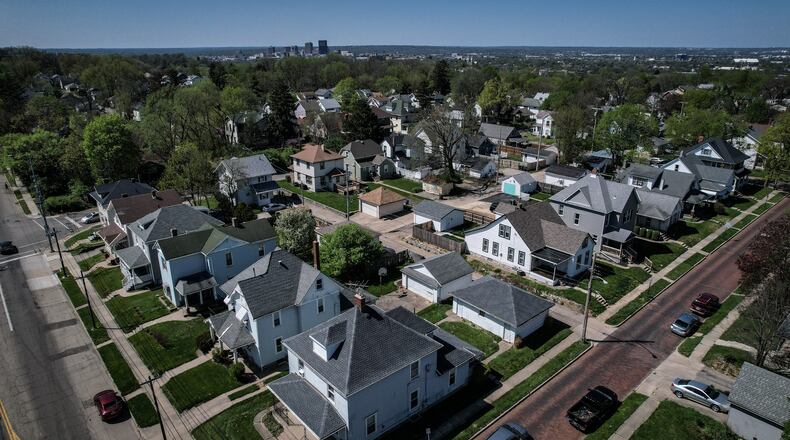He will know June 6 if it becomes part of the spending plan. Rep. Thomas Hall (R-Madison Twp.) introduced a stand-alone bill that mirror’s Lang amendment, so his colleagues in the House won’t be surprised if it is included in the budget bill.
“There are many other good ideas to sit down and ponder and consider, but they are all more long-term fixes that will need a lot of vetting,” Lang told the Dayton Daily News. “What we have is a short-term Band-aid, that’s all it is, it’s a short-term Band-aid that we can put in the budget to stop the bleeding we’re experiencing right now.”
Properties statewide are reappraised every six years, and property values are updated every third year based on sales data. The shifts are reflected on tax bills the following year. There are 13 Ohio county auditors in the throes of the triennial property value update, and the average recommendation is 34%, but in southwest Ohio the percentages are all on the high end: Butler (42%), Clermont (43%), Greene (32%) and Montgomery (37%).
The law change would force the tax commissioner to weight all three years of the reappraisal equally, which would bring an average 42% value increase down to around 25%. It also gives considerable more power to county auditors, who are the ones in the trenches and know first-hand what is going on in their communities.
The equally weighted data produces an estimated average 25% hike for Butler and Montgomery counties, 28% for Clermont and 22% for Greene County.
Usually value hikes don’t automatically trigger tax increases to the same degree. There are mechanisms in place to ensure taxpayers are generally protected from huge value hikes. Voted levies are capped at the amount taxpayers approved. Unvoted taxes are allowed to be collected up to a certain level, by Ohio law. That level is 10 mills for governmental bodies and 20 mills for schools.
When a school district reaches the 20-mill floor, the millage will not decrease any further, which causes a school district to collect additional funding as values increase. The 20-mill floor only applies to operating levies, not bond, permanent improvement, emergency, or income tax levies.
The 20-mill floor factor will impact taxpayers — the schools collect 55% to 72% of property taxes — in Butler and Greene counties heavily.
Greene County Auditor David Graham said Bellbrook Sugarcreek Local School District is the only district that hasn’t hit the 20-mill floor. He said taxpayers in that district “will see an increase but not at the level of the other districts.”
“We have one school district that is not at the 20-mill floor, everybody else is at the floor,” Graham said adding taxes in the bulk of the county “will go up more significantly than what they will for the school district that isn’t at the floor.”
The situation in Montgomery County is basically the opposite. The Miamisburg School District is the only one — there are some districts that touch the county but are mainly in neighboring counties — at the floor.
Montgomery County Auditor Karl Keith said “it’s not a value problem, it’s a tax problem” and school funding is at the heart of it.
“A lot of it comes back to school funding,” Keith said. “The big increases you will see across the state would be in those counties where the school districts are at the 20-mill floor. We are not, we only have one district.”
Butler County Auditor Nancy Nix said her team will address tweaking the proposed legislation and discuss the early, astronomical farmland value hikes at the follow-up summit.
Agricultural properties are leaping to 110% in Butler and the Greene hike is 75%. Montgomery County doesn’t have its number yet, but officials estimate it’ll be on par with Butler County.
Unlike residential properties, which are based on fair market value, the Current Agricultural Use Value (CAUV) values are based “on a study of seven years of crop income and expense data with the highest year and lowest year being dropped from the analysis.”
Butler County Auditor Nancy Nix’s CAUV Administrator Berkley Rose told the Journal-News previously the giant increase is due to an erroneous supposition that farmers’ costs haven’t increased.
“They’re saying the price of commodity crops has increased significantly, in other words, the income stream to the farmers has increased that significantly,” Rose said. “But what we’re struggling with is that in that same formula the cost associated with those crops has remained relatively stable to flat. Any lay person not familiar with farming would have to say how is that possible.”
About the Author

